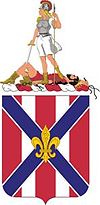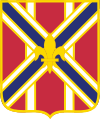
The 29th Infantry Division, also known as the "Blue and Gray Division", is an infantry division of the United States Army based at Fort Belvoir in Fairfax County, Virginia. The division is currently a formation of the Army National Guard and includes units from Virginia, Maryland, Kentucky, North Carolina, South Carolina, and West Virginia.

The 116th Infantry Brigade Combat Team is an infantry brigade combat team currently assigned to the Virginia Army National Guard, formerly known as the 1st Brigade, 29th Infantry Division; it is the largest command of the Virginia Army National Guard with an authorized strength of 3,400. The brigade is headquartered in Staunton, Virginia, at the Thomas Howie Memorial Armory, and is nicknamed the Stonewall Brigade in honor of its association with the 116th Infantry Regiment, tracing its lineage back to elements of an American Civil War Confederate brigade of the same name led by General Stonewall Jackson.
The 150th Field Artillery Regiment is a field artillery unit in the Indiana Army National Guard.

The 56th Stryker Brigade Combat Team (SBCT), 28th Infantry Division, also known as the Independence Brigade, is a brigade combat team of the Pennsylvania Army National Guard and has its headquarters located at Horsham Air Guard Station in Willow Grove, Pennsylvania.
The 3rd Field Artillery Regiment is a field artillery regiment of the United States Army, first formed in 1812, although regimental units trace their lineages as far back as 1794. Based on the service of these antecedents, the regiment claims battle honors for the War of 1812, the Seminole campaign, the Mexican War, the Civil War, the Spanish–American War, and the Philippine Insurrection. The regiment served with the 6th Division during World War I, with the 5th Division, 6th Division and 2d Cavalry Division between the world wars, and with the 9th Armored Division during and after World War II. Since 1961, the regiment has been a parent regiment under the Combat Arms Regimental System and the U.S. Army Regimental System, with regimental elements serving with the 1st, 6th, and 8th Infantry Divisions; 2nd and 3rd Armored Divisions; 1st Cavalry Division; 194th Armored Brigade; and various field artillery brigades and groups. Three regimental battalions are currently active: the 2nd Battalion in the 1st Armored Division and the 1st Battalion and 5th Battalion, both a part of the 17th Field Artillery Brigade.

The 6th Field Artillery Regiment is a Field Artillery Branch regiment of the United States Army first activated in 1907 from numbered companies of artillery. It was first organized with two battalions.

The 133rd Field Artillery Regiment is a parent field artillery regiment of the United States Army National Guard. It is currently represented in the Texas Army National Guard by the 1st, 3rd, and 4th Battalions.

The 146th Field Artillery Regiment is a field artillery regiment of the Army National Guard first Constituted in 1886 as the 1st, and 2nd Regiments of Infantry.
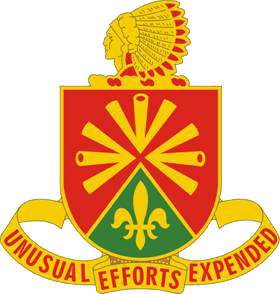
The 158th Field Artillery Regiment is a Field Artillery regiment of the Army National Guard.
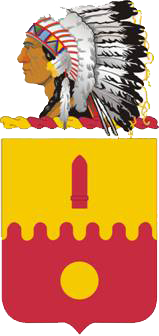
The 1st Battalion, 160th Field Artillery Regiment is headquartered in Chandler, Oklahoma. It is a part of the 45th Infantry Brigade Combat Team, Oklahoma Army National Guard.

The 112th Field Artillery Regiment is a Field Artillery Branch regiment of the New Jersey Army National Guard first formed in April 1917. In December 1941, it was the last field artillery regiment in the U.S. Army to convert from horse-drawn to truck-drawn howitzers.
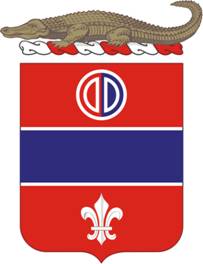
The 116th Field Artillery is a regiment of the Florida Army National Guard. Currently there are two battalions; 2-116th FA is fires battalion for the 53rd Brigade Combat Team, and 3-116th (HIMARS) is part of the 164th Air Defense Artillery Brigade, both of the Florida Army National Guard.

The 107th Field Artillery Regiment is a Field Artillery Branch regiment of the United States Army. It has been affiliated with the Pennsylvania National Guard since its formation. It appears that the regiment last formally came into existence in June 1959, when the 107th Field Artillery Battalion was reorganized as the new Regiment's 1st Battalion in line with the Pentomic (ROCID) reorganization going on at that time.

The 103rd Field Artillery Regiment is a regiment of the United States Army. The only currently existing component is the 1st Battalion, 103rd Field Artillery Regiment, a unit of the Rhode Island National Guard. The regiment was originally constituted in 1917, but it descends from predecessor units dating back to 1801.
The 111th Field Artillery Battalion was an artillery battalion of the United States Army, part of the 29th Infantry Division. The battalion fought in Operation Overlord.
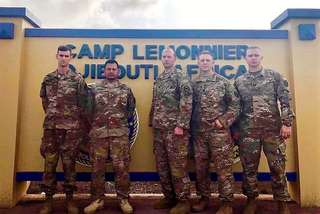
The 110th Information Operations (IO) Battalion was federally recognized as an organization on April 1, 2008. Following the inactivation of the 2d Battalion, 110th Field Artillery Regiment, the 110th IO battalion was given the honor to carry the 2d Battalion 110th Field Artillery lineage which dates back to World War I. The 110th IO FSB was designed to provide trained, deployable, culturally aware, and regionally focused information operations teams to perform tactical strategic-theater IO tasks.
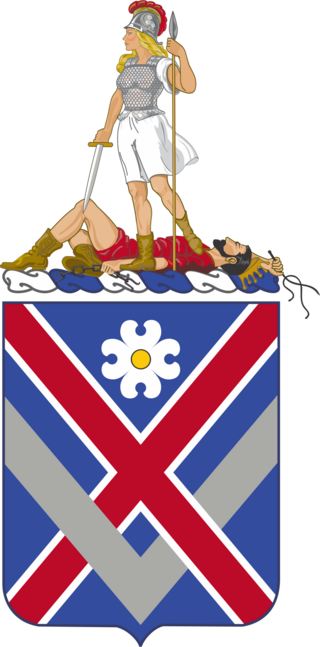
The 183rd Cavalry Regiment is a cavalry regiment of the United States Army, represented in the Virginia Army National Guard by 2nd Squadron, 183rd Cavalry (2-183). The squadron is the reconnaissance, surveillance, and target acquisition squadron of the 116th Infantry Brigade Combat Team, part of the 29th Infantry Division.
The 114th Field Artillery Regiment is a field artillery regiment of the Mississippi Army National Guard. The regiment's 2nd Battalion is the cannon battalion assigned to the 155th Armored Brigade Combat Team.

The 123rd Field Artillery Regiment is an active Field Artillery Branch regiment of the Illinois Army National Guard. The regiment's 2nd Battalion last served as a towed, 155mm cannon battalion assigned to the 169th Field Artillery Brigade, though administratively under the control of the 65th Troop Command.

The 429th Brigade Support Battalion is a combat service support battalion of the United States Army and the Virginia National Guard. It is part of the 116th Infantry Brigade Combat Team, Virginia Army National Guard.
